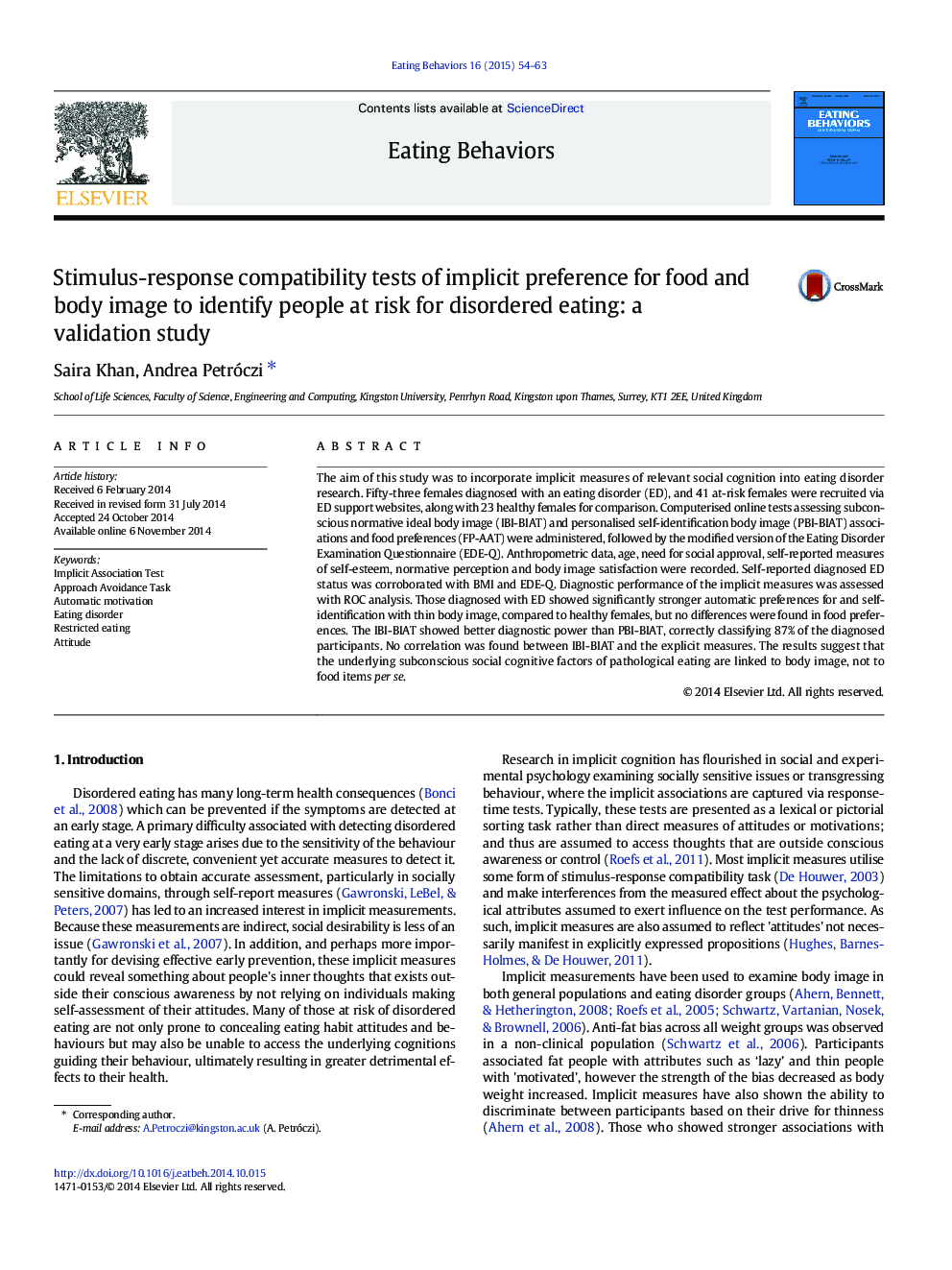| Article ID | Journal | Published Year | Pages | File Type |
|---|---|---|---|---|
| 906538 | Eating Behaviors | 2015 | 10 Pages |
•Tested the discriminating power of implicit body image and food preference measures.•Compared samples of clinically diagnosed eating disorder (ED) with healthy.•Ideal implicit body image showed good discriminatory power for ED.•ED was independent of automatic motivation for high/low fat food.•No correlation was found between implicit and explicit body image measures.
The aim of this study was to incorporate implicit measures of relevant social cognition into eating disorder research. Fifty-three females diagnosed with an eating disorder (ED), and 41 at-risk females were recruited via ED support websites, along with 23 healthy females for comparison. Computerised online tests assessing subconscious normative ideal body image (IBI-BIAT) and personalised self-identification body image (PBI-BIAT) associations and food preferences (FP-AAT) were administered, followed by the modified version of the Eating Disorder Examination Questionnaire (EDE-Q). Anthropometric data, age, need for social approval, self-reported measures of self-esteem, normative perception and body image satisfaction were recorded. Self-reported diagnosed ED status was corroborated with BMI and EDE-Q. Diagnostic performance of the implicit measures was assessed with ROC analysis. Those diagnosed with ED showed significantly stronger automatic preferences for and self-identification with thin body image, compared to healthy females, but no differences were found in food preferences. The IBI-BIAT showed better diagnostic power than PBI-BIAT, correctly classifying 87% of the diagnosed participants. No correlation was found between IBI-BIAT and the explicit measures. The results suggest that the underlying subconscious social cognitive factors of pathological eating are linked to body image, not to food items per se.
